Trees Birds Mammals Fish Amphibians Reptiles
Wild Algarve
Bookshop
Anacamptis morio - Green-winged Orchid
Phylum: Magnoliophyta - Class: Liliopsida - Order: Orchidales - Family: Orchidaceae
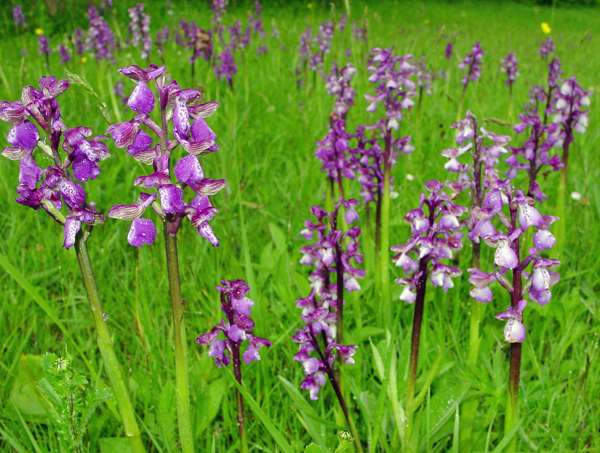
Anacamptis morio (formerly Orchis morio) flowers very soon after the Early PurpleOrchid, with which it is often confused.
Description
The Green-winged Orchid is not as common as the Early Purple Orchid Orchis mascula and, on close inspection, can be identified by the distinct parallel greenish veins on either side of the hood formed by the tepals on the upper part of the flower. These veins are never found on the Early Purple Orchid. The colour of the flowers can
vary from deep purple to very pale pink (as below). Occasionally white forms are found - see below.
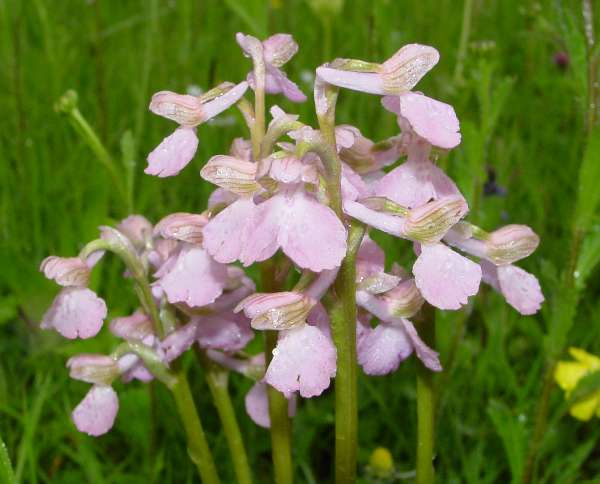
Distribution
The Green-winged Orchid can be found throughout the UK, in many European countries including Slovenia and Bulgaria, and in North Africa and the Near East.
This lovely orchid is in serious decline in the UK, and it is also thought to have become extinct in The Burren in Ireland due to destruction of its preferred habitat of old, umimproved, species-rich meadows.
We have seen Green-winged Orchids at Kenfig National Nature Reserve in South Wales, and there are marvellous displays of Green-winged Orchids each spring in a large grassy area, which is managed without the use of herbicides and pesticides, at Bristol Waterworks.
Habitat
Green-winged Orchids cannot tolerate the kind of chemical intervention favoured by the farmers of today in order to maximise on crop production.
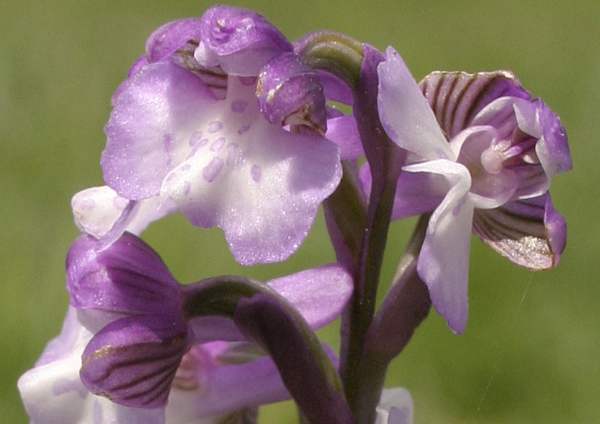
In Mediterranean countries where traditional farming methods continue to be used, it is still possible to find large numbers of these beautiful orchids along with some of their close relatives, the Champagne Orchid Anacamptis morio subsp. champagneuxii and the Long-spurred Orchid Anacamptis morio subsp. longicornu. The Algarve region of Portugal is a particularly good place to see these orchids.
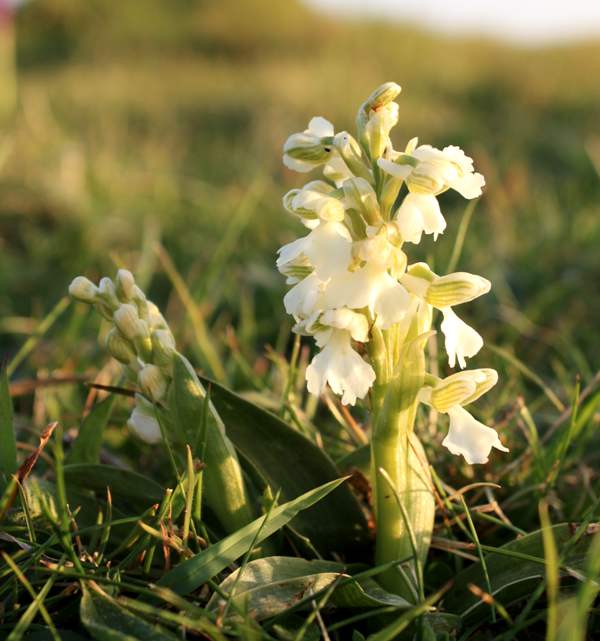
White form of Anacamptis morio - Picture: Denholm O'Hanlon
The white form of Anacamptis morio shown above was found in the Pembrokeshire National Park in May. Although it is uncommon for white Green-winged Orchids to appear in the area, they are frequently found in the Mediterranean region, and occasionally in other parts of the UK. The other specimens shown on this page were photographed in Somerset during April and (group shown below) in southern France in May.
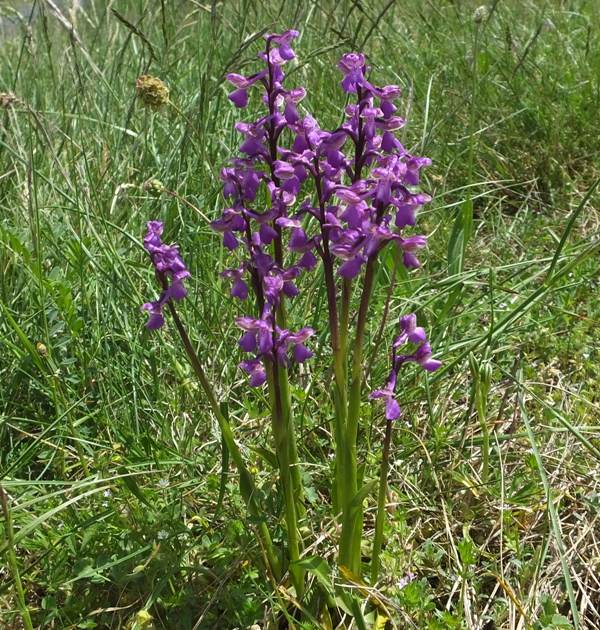
Flowering times
In the UK Green-winged Orchid flowers in late April, May and June. In the Mediterranean region the flowers appear from late March to the beginning of June.
Hybrids and Varieties
One hybrid is reported from Guernsey and Jersey
One hybrid is reported from England and Wales
- Orchis × morioides is a hybrid with Green-winged Orchid Orchis mascula
Etymology
The genus name Anacamptis comes from the Greek anakampto, meaning 'bent back'; it refers to the shape of the flower spur. The specific epithet morio is Latin and means 'clown'. The striped and spotted flowers of the Early Purple-orchid are said to resemble the appearance generally associated with clowns.
Reference sources
The Plant List
Sue Parker (2023) Wild Orchids of Wales - how, when and where to find them; First Nature e-book (Amazon Kindle format)
Sue Parker (2023) Wild Orchids of the Algarve - where, when and how to find them; First Nature e-book (Amazon Kindle format)
Chris Thorogood and Simon Hiscock (2014) Field Guide to the Wildflowers of the Algarve; Kew Publishing
Anne and Simon Harrap (2005) Orchids of Britain and Ireland; A&C Black
Pierre Delforge (2005) Orchids of Europe, North Africa and the Middle East; A&C Black
Sue Parker's latest ebook is a revised and enlarged edition of Wild Orchids in The Burren. Full details here...
Buy it for just £5.95 on Amazon...
Sue Parker's new ebook is a comprehensive and fully revised edition of her acclaimed field guide to the Wild Orchids of Wales. Full details here...
Buy it for just £5.95 on Amazon...
Sue Parker's 5-star acclaimed field guide to the Wild Orchids of the Algarve is now available as an ebook. Full details here...
Buy it for just £5.95 on Amazon...
Please Help Us: If you have found this information interesting and useful, please consider helping to keep First Nature online by making a small donation towards the web hosting and internet costs.
Any donations over and above the essential running costs will help support the conservation work of Plantlife, the Rivers Trust and charitable botanic gardens - as do author royalties and publisher proceeds from books by Pat and Sue.